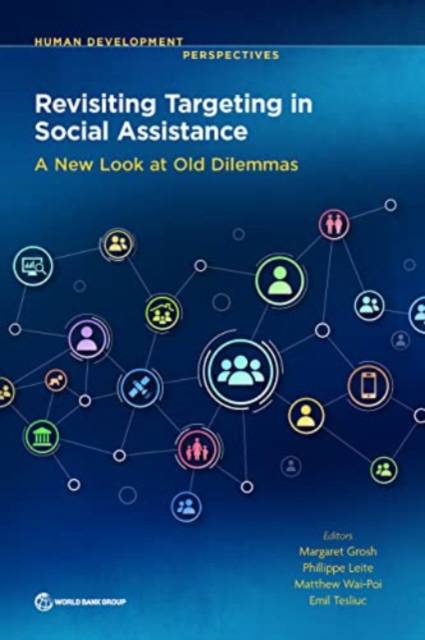
- Retrait gratuit dans votre magasin Club
- 7.000.000 titres dans notre catalogue
- Payer en toute sécurité
- Toujours un magasin près de chez vous
- Retrait gratuit dans votre magasin Club
- 7.000.0000 titres dans notre catalogue
- Payer en toute sécurité
- Toujours un magasin près de chez vous
Revisiting Targeting in Social Assistance
A New Look at Old Dilemmas
108,45 €
+ 216 points
Description
Targeting is a commonly used, but much debated, policy tool within global social assistance practice. Revisiting Targeting in Social Assistance: A New Look at Old Dilemmas examines the well-known dilemmas in light of the growing body of experience, new implementation capacities, and the potential to bring new data and data science to bear. The book begins by considering why or whether or how narrowly or broadly to target different parts of social assistance and updates the global empirics around the outcomes and costs of targeting. It illustrates the choices that must be made in moving from an abstract vision to implementable definitions and procedures, and in deciding how the choices should be informed by values, empirics, and context. The importance of delivery systems and processes to distributional outcomes are emphasized, and many facets with room for improvement are discussed. The book also explores the choices between targeting methods and how differences in purposes and contexts shape those. The know-how with respect to the data and inference used by the different household-specific targeting methods is summarized and comprehensively updated, including a focus on "big data" and machine learning. A primer on measurement issues is included. Key findings include the following: - Targeting selected categories, families, or individuals plays a valuable role within the framework of universal social protection. - Measuring the accuracy and cost of targeting can be done in many ways, and judicious choices require a range of metrics. - Weighing the relatively low costs of targeting against the potential gains is important. - Implementing inclusive delivery systems is critical for reducing errors of exclusion and inclusion. - Selecting and customizing the appropriate targeting method depends on purpose and context; there is no method preferred in all circumstances. - Leveraging advances in technology--ICT, big data, artificial intelligence, machine learning--can improve targeting accuracy, but they are not a panacea; better data matters more than sophistication in inference. - Targeting social protection should be a dynamic process.
Spécifications
Parties prenantes
- Editeur:
Contenu
- Nombre de pages :
- 574
- Langue:
- Anglais
- Collection :
Caractéristiques
- EAN:
- 9781464818141
- Date de parution :
- 02-06-22
- Format:
- Livre broché
- Format numérique:
- Trade paperback (VS)
- Dimensions :
- 152 mm x 229 mm
- Poids :
- 1052 g

Les avis
Nous publions uniquement les avis qui respectent les conditions requises. Consultez nos conditions pour les avis.





